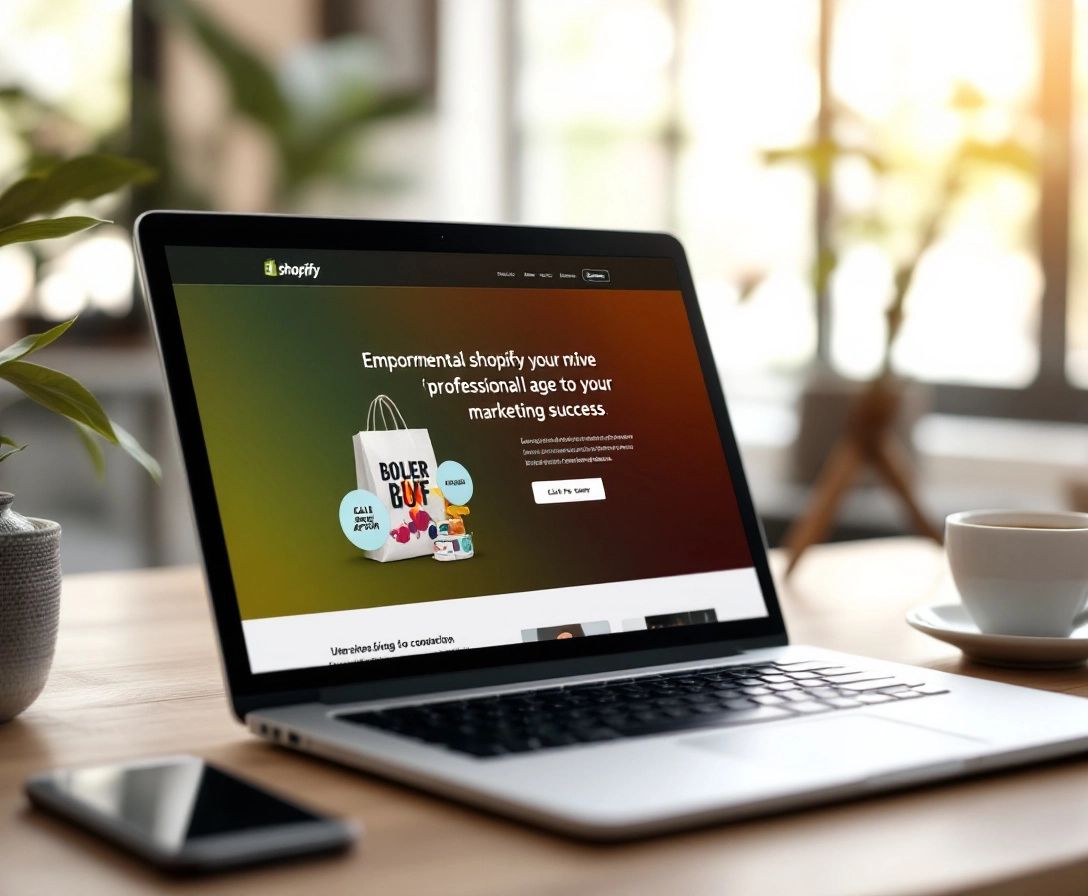What does ROI – Return on Investment mean in Shopify?
August 24, 2024

If you’re a Shopify store owner, you’ve likely heard the term ROI before. ROI stands for Return on Investment, which is a crucial metric for measuring the success of your business. In this article, we’ll explore the concept of ROI in detail and how it relates to Shopify stores. We’ll cover the basics of ROI, how to calculate it for your store, factors that affect it, and strategies for improving your ROI.
Understanding the Concept of ROI in Business
At its core, ROI represents the return you receive on your investment. For e-commerce businesses like Shopify stores, this refers to the profit or revenue generated from the money invested in the store. ROI is a valuable metric because it helps store owners assess the effectiveness of their investments and make better decisions moving forward.
The Basics of Return on Investment
ROI is typically expressed as a percentage and is calculated by dividing the net profit by the total investment. Net profit is the revenue generated minus the costs incurred to generate that revenue. The total investment includes all costs associated with running the business, including product costs, advertising expenses, and store operation costs.
For example, if you invest $10,000 in your Shopify store and generate $12,000 in revenue, your net profit is $2,000. Therefore, your ROI is 20% ($2,000 profit / $10,000 investment x 100).
It is important to note that ROI can be used to evaluate the performance of different investments. For instance, if you have two investments that have generated different returns, you can use ROI to determine which investment was more profitable.
Importance of ROI in Decision-Making
ROI is an essential metric for making informed decisions about your Shopify store. By analyzing your ROI, you can identify areas of your business that are performing well and others that need improvement. It can also help you prioritize investments and determine which areas of your store require the most attention.
For instance, if you notice that a particular product is generating a high ROI, you may want to invest more resources into promoting that product. On the other hand, if you notice that a particular advertising campaign is not generating a high ROI, you may want to reconsider your strategy or allocate your resources elsewhere.
Furthermore, ROI can help you make decisions about expanding your business. If you are considering opening a new store location or launching a new product line, you can use ROI to evaluate the potential profitability of these investments.
Overall, ROI is a crucial metric for any business owner to understand. By analyzing your ROI, you can make informed decisions about your investments and improve the profitability of your business.
How to Calculate ROI for Your Shopify Store
Calculating ROI for your Shopify store is relatively straightforward, but it requires a comprehensive understanding of your business’s financials. In this article, we will dive deeper into the process of calculating ROI for your Shopify store and provide additional tips for maximizing your returns.
Identifying Your Investment Costs
The first step in calculating ROI is to identify all costs associated with your Shopify store. This includes product costs, marketing and advertising expenses, hosting and website fees, shipping and handling costs, and other operational expenses. It’s important to be as thorough as possible when identifying costs to ensure that your ROI calculation is accurate.
One area that is often overlooked when calculating investment costs is the time and effort you put into running your Shopify store. While it may not be a direct financial cost, your time is valuable and should be factored into the overall investment in your business.
Measuring Revenue and Profit
The second step is to measure your store’s revenue and profit. Revenue is the money earned from sales, while profit is the revenue minus the costs incurred to generate that revenue. You should have a record of all sales and costs associated with running your store, including a breakdown of expenses by category.
It’s important to regularly track your revenue and profit to ensure that your business is on track to meet your financial goals. This can be done using a variety of tools, including Shopify’s built-in analytics and reporting features.
The ROI Formula
Once you have total costs and revenue identified, calculating ROI is simple. The formula is as follows:
- Determine your net profit (Revenue – Costs)
- Calculate your ROI by dividing your net profit by your total investment, then multiply the result by 100 to express it as a percentage.
Let’s say your Shopify store generated $50,000 in revenue and incurred $30,000 in costs. Your total investment is $20,000 ($10,000 in product costs and $10,000 in marketing expenses). Your net profit is $20,000 ($50,000 revenue – $30,000 costs), and your ROI is 100% ($20,000 net profit / $20,000 investment x 100).
While calculating ROI is important, it’s also essential to take steps to maximize your returns. This includes regularly reviewing your expenses to identify areas where you can cut costs, optimizing your marketing and advertising strategies to increase sales, and regularly updating your product offerings to keep up with changing customer demands.
By following these tips and regularly monitoring your ROI, you can ensure that your Shopify store is a profitable and successful venture.
Factors Affecting ROI in Shopify
While calculating ROI is relatively simple, several factors can affect its accuracy and performance for your Shopify store. In this article, we will explore some of the key factors that can impact your ROI and provide some tips on how to manage them effectively.
Marketing and Advertising Expenses
Investing in marketing and advertising is vital for driving revenue to your Shopify store. However, overspending in this category can quickly eat into your profits and lower your ROI. It’s essential to carefully manage your marketing and advertising expenses to ensure that you’re getting the best return on investment.
One way to manage your marketing and advertising expenses is to track your campaigns’ performance carefully. Analyze the data to identify which campaigns are generating the most revenue and adjust your spending accordingly. You may also want to consider using tools like Google Analytics to track your website’s traffic and conversion rates, allowing you to make data-driven decisions about your marketing and advertising spend.
Product Costs and Pricing
The cost of goods or services is another crucial factor influencing ROI. Your product cost should be carefully managed to ensure you’re not selling yourself short. However, while charging too little can provide a boost in sales, this lower price point may impact your store’s ability to generate a healthy ROI.
When setting your product prices, it’s essential to consider both your costs and your target market. Conducting market research can help you identify the price points that your customers are willing to pay while still allowing you to make a profit. You may also want to consider offering different pricing tiers, such as a premium product line, to appeal to a broader range of customers.
Customer Acquisition and Retention Strategies
Your customer acquisition and retention strategies are also significant factors affecting ROI. If your customer acquisition costs are high and retention rates are low, your ROI will likely suffer. Maintaining strong customer relationships and improving retention can increase your ROI in the long run.
One way to improve customer retention is to offer exceptional customer service. Responding promptly to customer inquiries and resolving issues quickly can help build trust and loyalty with your customers. You may also want to consider implementing a loyalty program to reward your repeat customers and encourage them to make additional purchases.
Finally, it’s essential to monitor your customer acquisition costs carefully. If you’re spending more to acquire a customer than you’re making in revenue from that customer, it may be time to reevaluate your acquisition strategy. Consider focusing on organic traffic through search engine optimization (SEO) or social media marketing to reduce your acquisition costs.
Improving Your Shopify Store’s ROI
As an online store owner, you always want to maximize your return on investment (ROI). While many factors influence your store’s ROI, there are several strategies you can use to improve it.
Optimizing Your Marketing Efforts
One effective way to improve ROI is to optimize your marketing efforts. This means analyzing your current marketing strategy and identifying areas for optimization. Are you targeting the right audience? Are your ads compelling enough? Are you using the right channels to reach your audience?
By answering these questions, you can make small changes in your marketing strategy that can lead to significant improvements in ROI over time. For example, you could try A/B testing different ad copy or images to see what resonates best with your audience. Or, you could experiment with different advertising channels, such as social media or influencer marketing, to see which ones drive the most traffic and sales.
Streamlining Store Operations
The efficiency of your store operations can also impact your ROI. If you’re spending too much time and money on order fulfillment or shipping and handling, it can eat into your profits and lower your ROI. That’s why it’s important to identify areas for improvement in store operations.
One way to streamline your operations is to automate certain tasks, such as order tracking or email notifications. You could also consider outsourcing some tasks, such as customer service or fulfillment, to third-party providers. By reducing the time and resources you spend on these tasks, you can lower your operating costs and increase your ROI.
Enhancing Customer Experience
Your customers are crucial to your Shopify store’s success. By enhancing the customer experience, you can improve retention rates and attract new customers through word of mouth. This can lead to higher sales and a better ROI.
One way to enhance the customer experience is to offer exceptional customer service. This means responding quickly to customer inquiries, resolving issues promptly, and going above and beyond to make your customers feel valued. You could also provide personalized experiences, such as recommending products based on their purchase history or sending personalized thank-you notes.
Another way to enhance the customer experience is to create a sense of community around your brand. This could involve hosting events, creating a loyalty program, or featuring user-generated content on your website and social media channels. By building a loyal customer base, you can increase repeat purchases and boost your ROI.
Conclusion
ROI is a critical metric for any Shopify store owner to understand. By calculating and measuring your ROI, you can make informed decisions about your business investments and identify areas for improvement. Managing your costs, optimizing your marketing efforts, and enhancing the customer experience are all strategies that can increase your store’s ROI over time. By adopting these strategies, you can ensure the long-term success of your Shopify store and optimize its ROI for sustained growth.
 Checkout Links
Checkout Links



